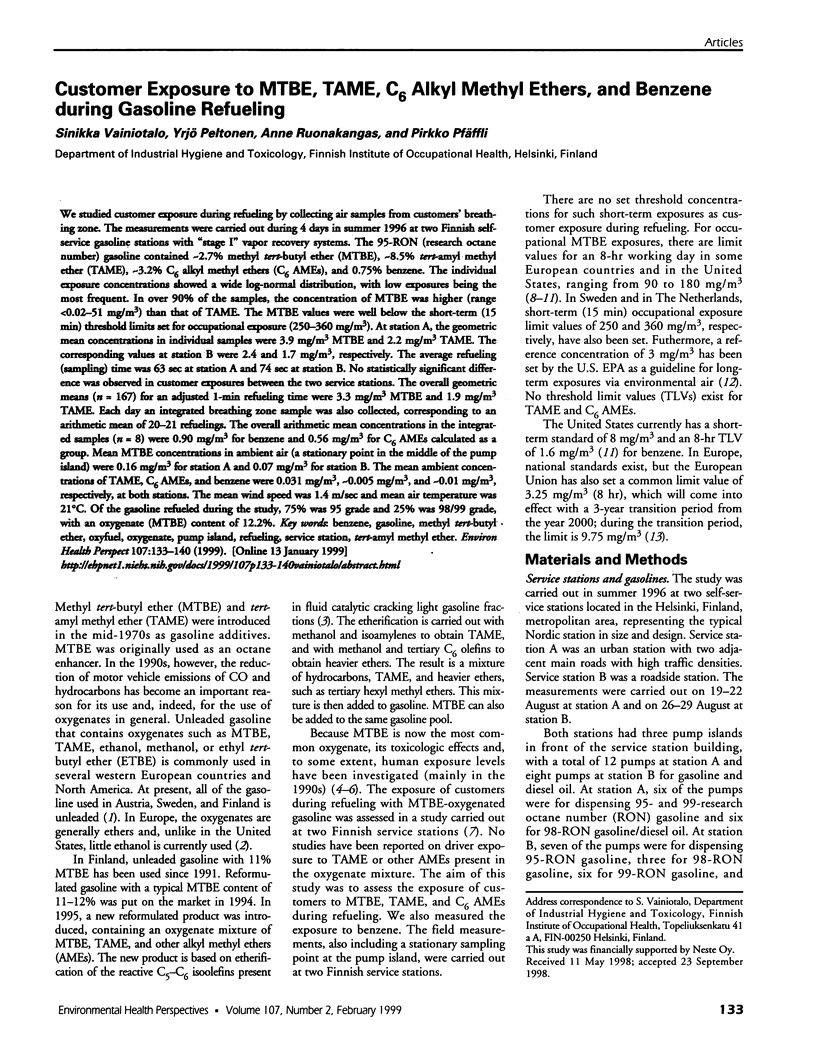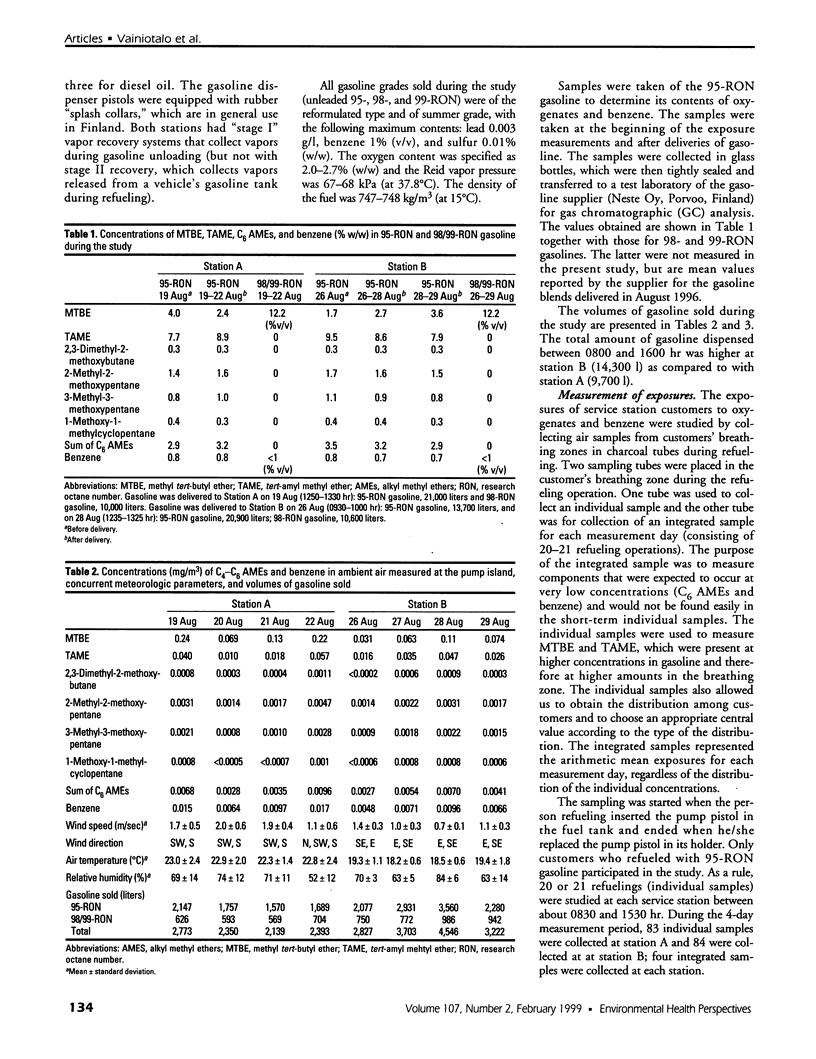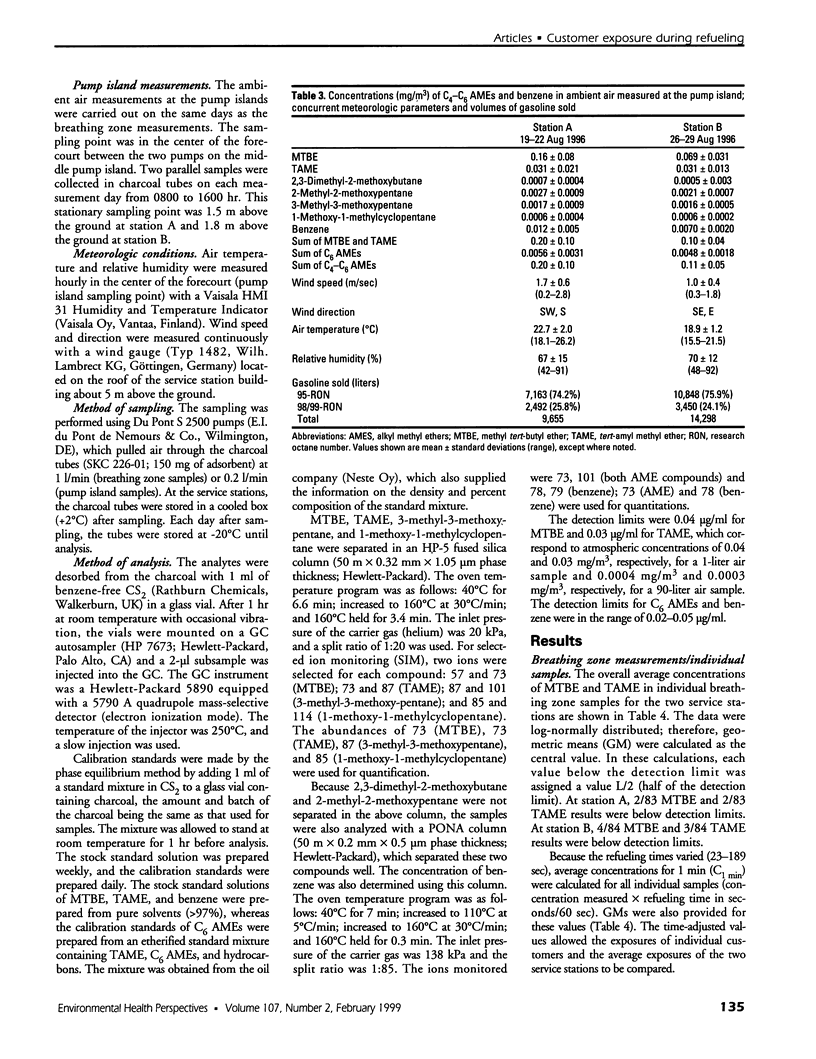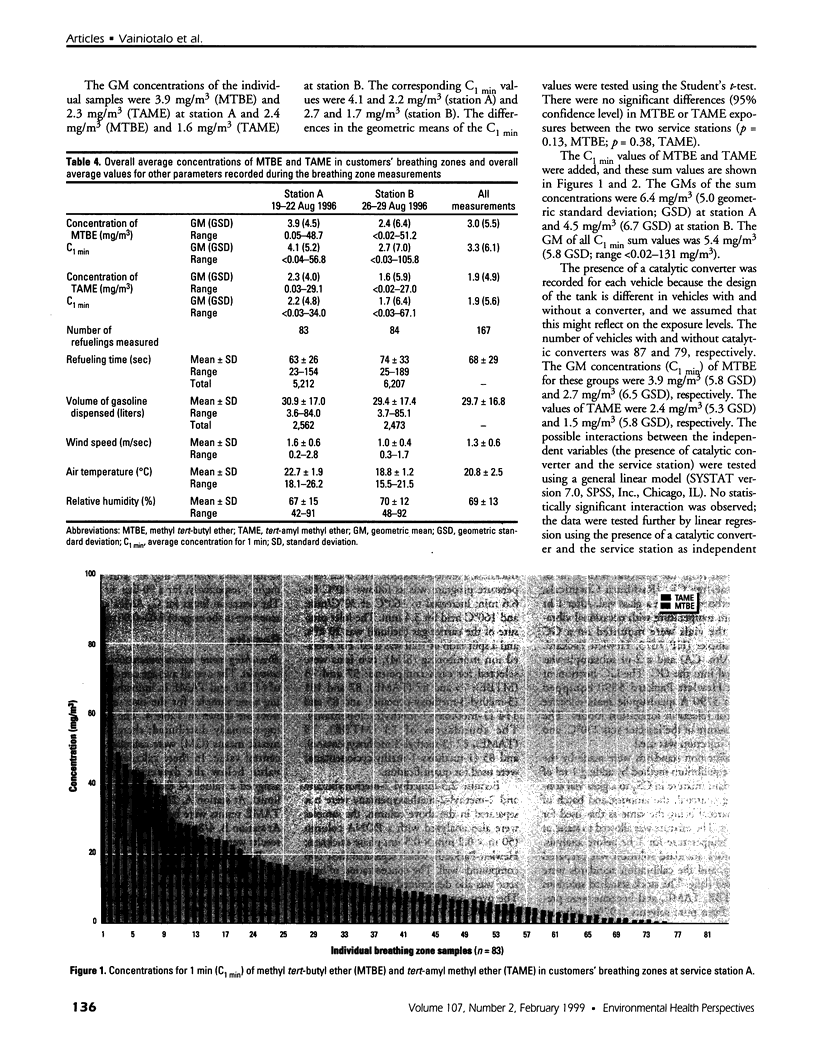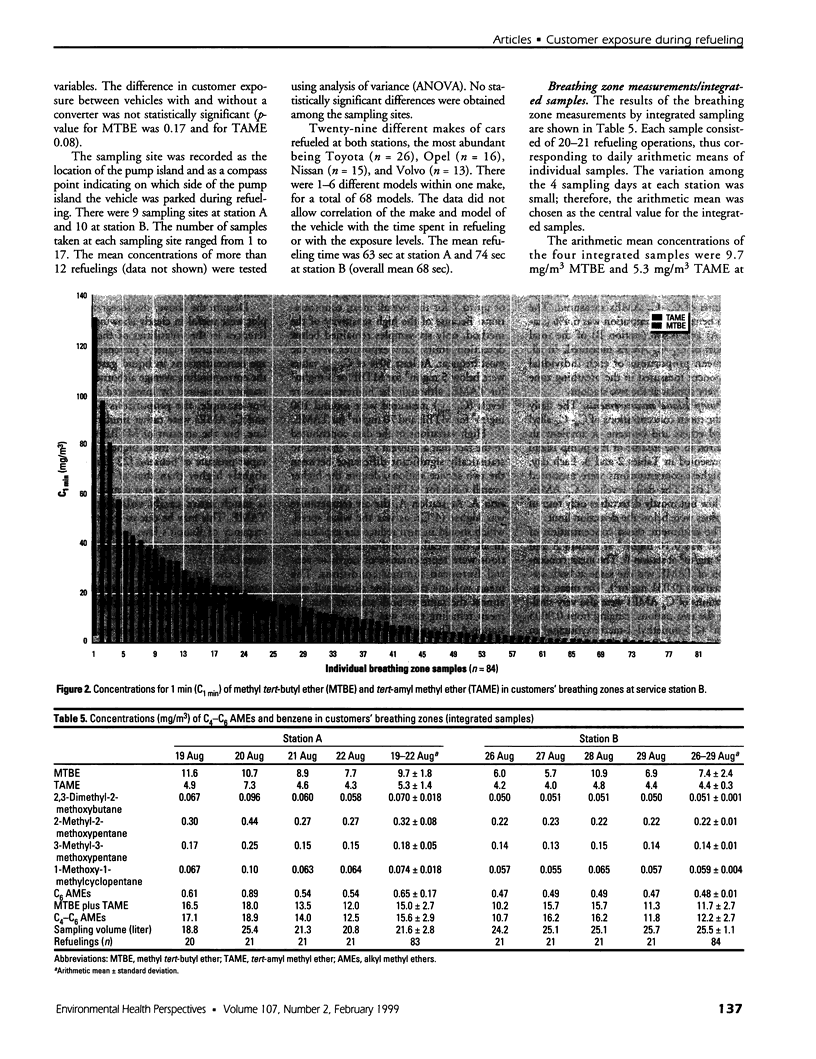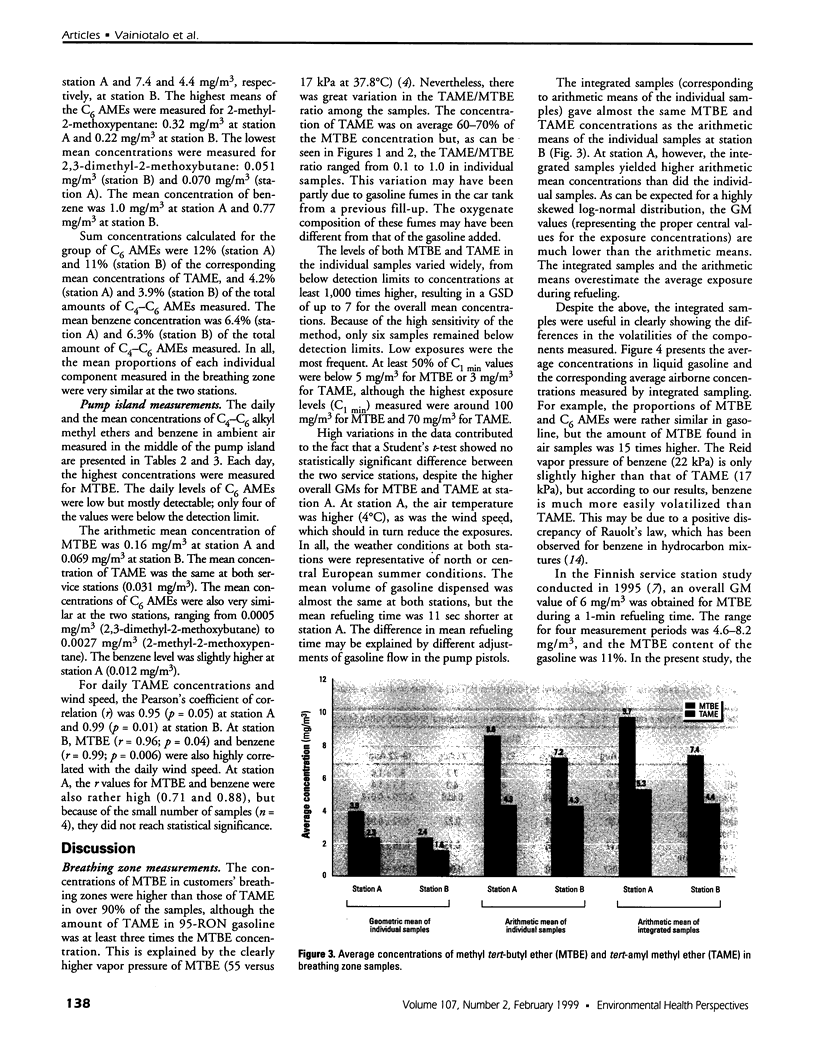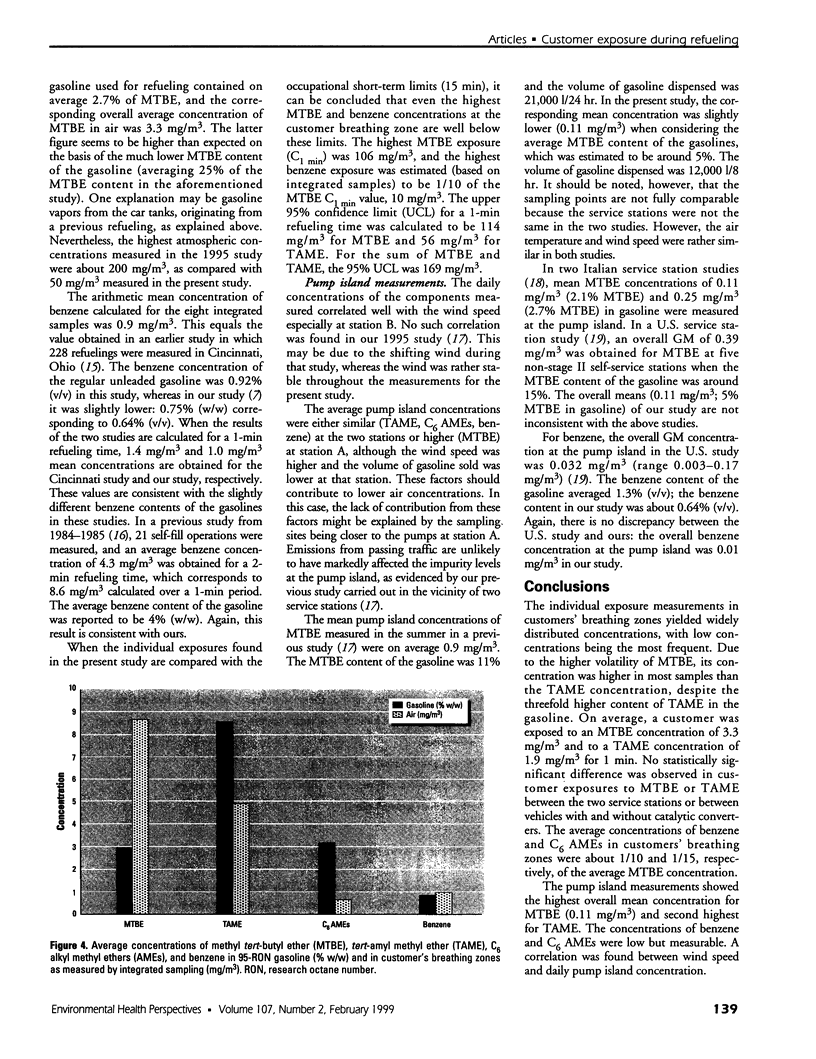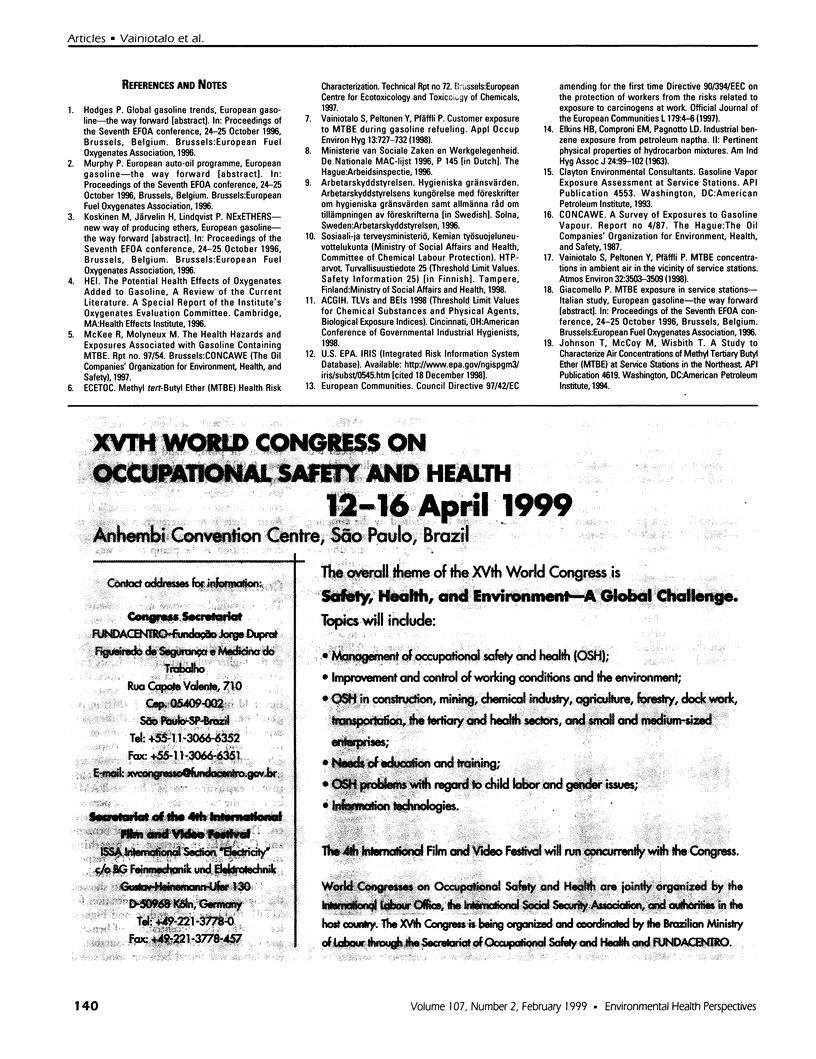Abstract
We studied customer exposure during refueling by collecting air samples from customers' breathing zone. The measurements were carried out during 4 days in summer 1996 at two Finnish self-service gasoline stations with "stage I" vapor recovery systems. The 95-RON (research octane number) gasoline contained approximately 2.7% methyl tert-butyl ether (MTBE), approximately 8.5% tert-amyl methyl ether (TAME), approximately 3.2% C6 alkyl methyl ethers (C6 AMEs), and 0.75% benzene. The individual exposure concentrations showed a wide log-normal distribution, with low exposures being the most frequent. In over 90% of the samples, the concentration of MTBE was higher (range <0.02-51 mg/m3) than that of TAME. The MTBE values were well below the short-term (15 min) threshold limits set for occupational exposure (250-360 mg/m3). At station A, the geometric mean concentrations in individual samples were 3.9 mg/m3 MTBE and 2. 2 mg/m3 TAME. The corresponding values at station B were 2.4 and 1.7 mg/m3, respectively. The average refueling (sampling) time was 63 sec at station A and 74 sec at station B. No statistically significant difference was observed in customer exposures between the two service stations. The overall geometric means (n = 167) for an adjusted 1-min refueling time were 3.3 mg/m3 MTBE and 1.9 mg/m3 TAME. Each day an integrated breathing zone sample was also collected, corresponding to an arithmetic mean of 20-21 refuelings. The overall arithmetic mean concentrations in the integrated samples (n = 8) were 0.90 mg/m3 for benzene and 0.56 mg/m3 for C6 AMEs calculated as a group. Mean MTBE concentrations in ambient air (a stationary point in the middle of the pump island) were 0.16 mg/m3 for station A and 0.07 mg/m3 for station B. The mean ambient concentrations of TAME, C6 AMEs, and benzene were 0.031 mg/m3, approximately 0.005 mg/m3, and approximately 0.01 mg/m3, respectively, at both stations. The mean wind speed was 1.4 m/sec and mean air temperature was 21 degreesC. Of the gasoline refueled during the study, 75% was 95 grade and 25% was 98/99 grade, with an oxygenate (MTBE) content of 12.2%.
Full text
PDF